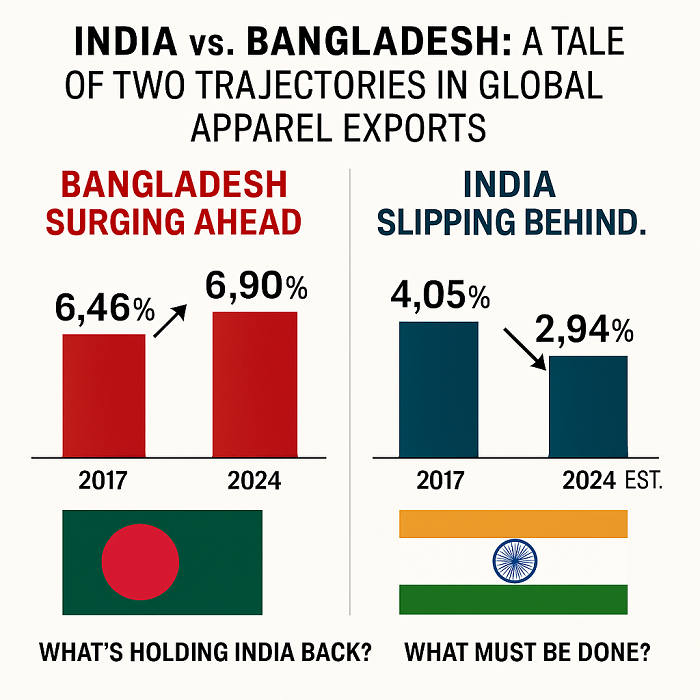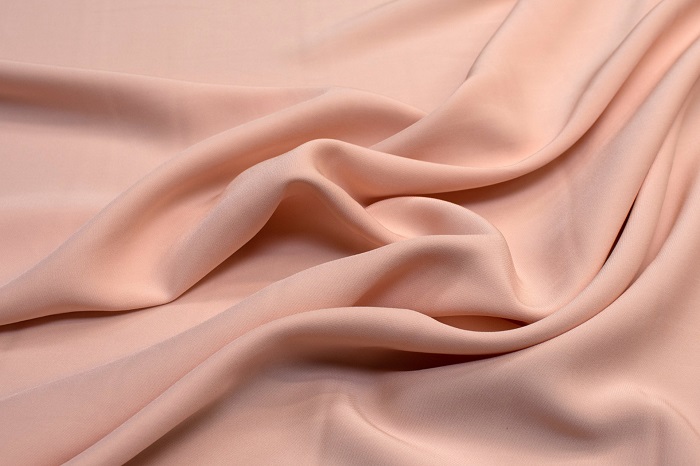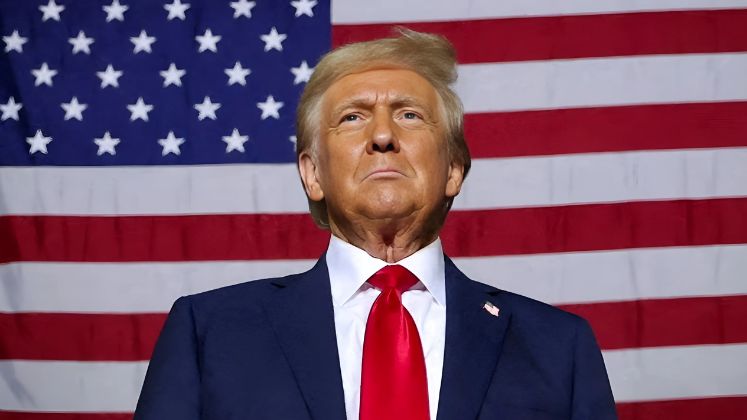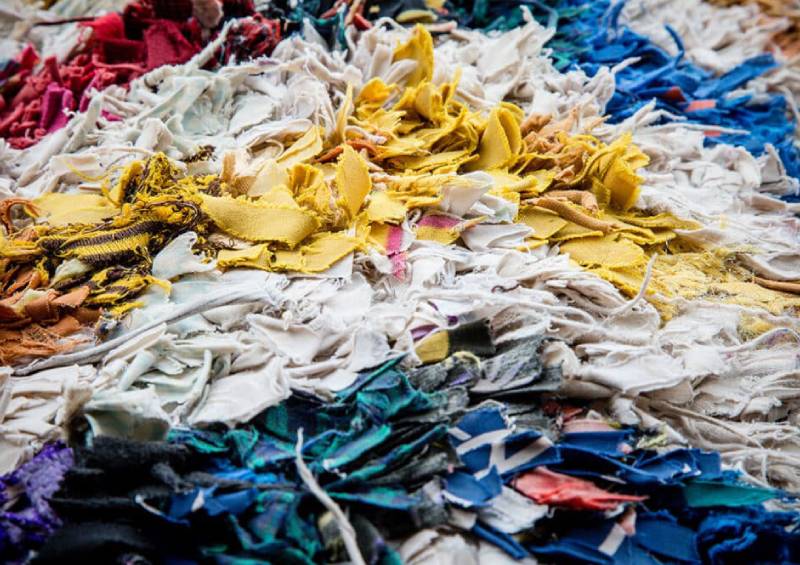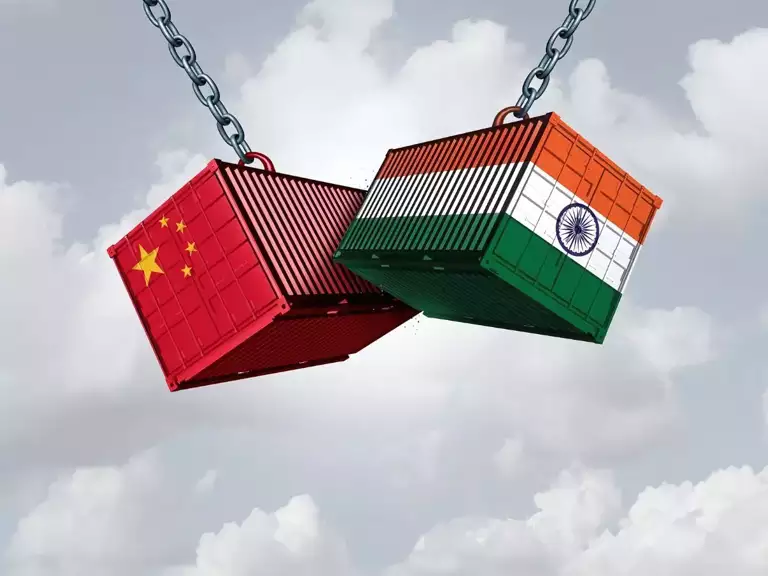
Domestic cotton markets, which remained under downside pressure since the beginning of the cotton season in October 2012, are now showing signs of recovery, amid firm prices in international markets. Global cotton prices are influenced by three nations; China, India and the US. China is central to any discussion on cotton markets, being the world’s largest producer, consumer and importer of cotton.
India, being the second largest producer, consumer and exporter of cotton, commands a special attention in the world markets. In fact, participants across the globe are eyeing cotton trade policy developments in India as the country supplies a significant portion of its produce to global markets. India has witnessed a sharp rise in yield after the widespread introduction of genetically modified cotton seeds, i.e., BT cotton, in 2002-03, which turned the country’s status from being a net importer to net exporter of the commodity.
In the current context, fundamentals for 2012-’13 season (October-September) seem to be a comparatively stable for domestic cotton markets if exports are maintained around the estimated levels. Considering the recent development of offloading stocks from the state reserves in India and China, cotton prices are expected to trade with a downward bias in the near term.
Prices, which are currently trading around Rs 19,000 ( approx. USD 349) per bale, may touch Rs 18,500 ( approx. USD 340) per bale in the near term. However, if international markets continue to trend upwards, cotton prices in domestic markets will remain positive in the medium to long term. Cotton prices may tread towards Rs 19,800( approx. USD 364) per bale in the next 2-3 months.
Tags:
Textile India, Textile World (India), Fibre( India), Cotton ( India)
 National Textile Corporation (NTC), an eco-friendly integrated textile company, plans to launch new brands which with a pan India presence. Its aim is to be a leading textile enterprise, improving capacity utilization, economy of operations, productivity, quality, brand image, market share and exports. “We have put in place various mechanisms to achieve this. We are improving our capacity utilization and launching new brands, renovating our stores and getting into the franchise mode for readymade garments. Also, we are participating in trade fairs to increase exports,” says Aloke Banerjee, Director Marketing, NTC.
National Textile Corporation (NTC), an eco-friendly integrated textile company, plans to launch new brands which with a pan India presence. Its aim is to be a leading textile enterprise, improving capacity utilization, economy of operations, productivity, quality, brand image, market share and exports. “We have put in place various mechanisms to achieve this. We are improving our capacity utilization and launching new brands, renovating our stores and getting into the franchise mode for readymade garments. Also, we are participating in trade fairs to increase exports,” says Aloke Banerjee, Director Marketing, NTC.
And to help NTC build a competent designing team they recently hosted an initiative called ‘Young Designer Hunt’ wherein well known designer Raghavendra Rathore was roped in. Young designers are participating in this event and would exhibit their work regularly and take them to international level. Winners of the ‘Designer Hunt’ will be working on a new apparel and accessories brand which will soon be launched in India and overseas. The brand, called ‘Brand India’ is being launched under the guidance of Raghavendra Rathore.
Talking further about their retail spread Banerjee says, “We plan to launch 200 stores to be operated through franchisee model of operation focusing on supply chain model. This would be done with the help of a master franchise. We have a very transparent method of selecting a master franchise though advertisements. We have selected a master franchise that will do the operations for other franchises pan India. NTC will have full control on these independent franchise stores in terms of product supply. They will store only NTC products exclusively. The main investment will be done by the master franchise while NTC will help in part renovation of the stores as and when required.” 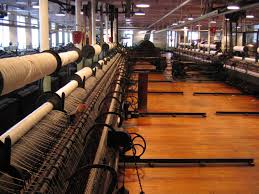
Similarly, for increasing production capacity NTC plans to have private partners to do the funding. Meanwhile NTC also has generated funds that will be utilized to increase their production capacity. Further, the company plans to apply for bank loans to help them increase the capacity.
At present NTC does not have any foreign partnerships for their production and would be getting into a partnership for its technical textile venture. “We have received inquiries from a few foreign companies in Japan, Germany, America and India as well. We are in the process of shortlisting a company for a joint venture for marketing and production of our technical textile venture,” adds Banerjee.
They plan is to launch the new brand in the value for money segment. As Banerjee says “We would like to give the people of India an honestly priced product. Moreover the fact that the brand is coming from the government will ensure that the product is available at the right price and the promised quality.”
NTC plans to launch ‘Brand India’ between July and September. It has a substantial budget for both marketing and brand building. “We shall not constrain ourselves to our expansion appetite, currently the budget allocated for our advertising and marketing is approximately around Rs. 25 crores. An aggressive brand and retail communication has been planned. We have a value for money proposition for our shirt brand. A women’s empowerment program called “StreeVijay” will be launched soon. We also plan to launch a mid level brand called ‘Raasa’ along with it says Banerjee.
For ‘Brand India’ the company plans to target the middle class and upper middle class segment, while as far as the retail spread is concerned the company shall get into A and B markets and for the other brands NTC plans to target the B and C markets.
NTC aims for a CAGR of 6 to 8 per cent and capture not only the Indian market but also spread is its wings internationally. However, according to Banerjee this will happen in phases and currently they will concentrate on building the brand locally.
 India’s Northeast region is emerging as the latest destination for upscale apparel and accessories labels. Many top brands are rushing to take advantage of the growing demand in states such as Assam, Tripura and Manipur. From the makers of sports and fashion wear to branded jewellery chains, retailers are heading to the seven sisters either to open their stores or expand their retail footprint.
India’s Northeast region is emerging as the latest destination for upscale apparel and accessories labels. Many top brands are rushing to take advantage of the growing demand in states such as Assam, Tripura and Manipur. From the makers of sports and fashion wear to branded jewellery chains, retailers are heading to the seven sisters either to open their stores or expand their retail footprint.
Take s.Oliver Fashion India for example, it runs the s.Oliver stores across India, and has been receiving queries from potential franchisees in cities such as Shillong, Guwahati and Siliguri. By mid-2013, the company is looking at venturing into this untapped market. It may be recalled that the premium German apparel brand had entered India in 2007.
The Northeast, home to a combined 45 million people as of 2011 Census, comprises of the states of Arunachal Pradesh, Assam, Manipur, Meghalaya, Mizoram, Sikkim and Tripura. A good pace of economic growth in recent years has increased the purchasing power of people in the region. While the average rate of growth in gross state domestic product (GSDP), a measure of state-wise economic output, was 6.88 per cent in 2011-12, some Northeastern states grew faster. Assam’s economy grew at 8.42 per cent, Tripura’s by 8.87 per cent and Meghalaya clocked in growth of 9.54 per cent reveal Planning Commission figures. 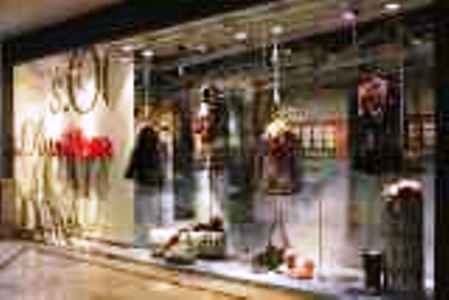
Louis Philippe, the men’s brand from Madura Garments that sells apparel, shoes and accessories, started test-marketing its collections in the Northeast one-and-a-half years ago with a store in Guwahati. Now it is looking at opening more stores in the region. Similarly jewellery chain Tanishq has two stores in Guwahati and Agartala and is now planning to open three more within this year. Titan, which also sells watches and eyewear under the Titan and Fastrack brands, clocked in sales worth Rs 100 crores in the region last year, up from Rs 12-13 crores five years ago.
A research done by Nielsen shows, the Northeast accounts for 3.8 per cent of India’s personal care market, in terms of value, but is growing at a yearly pace of 22 percent —three percentage points higher than the national average. No wonder then that even fashion retailers and consumer goods companies are planning retail strategies in the area. New Delhi-based DLF Brands, which represents brands such as Forever 21, Mothercare and DKNY in India, too is mulling entering the region in the next one year.
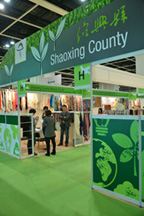 There sure is a bright side to the economic slowdown at least for the Asian textiles and apparels industry. For manufacturers in India, China, Korea, Taiwan, Japan et al, the slowdown has not really meant slowing down of business completely. Indeed sales have been sluggish and demand not up to the mark at least from their traditional markets of the US and Europe, but manufacturers in this region are not complaining at least not yet. In fact, most stakeholders say they continued selling and what keeps them going is newer markets within the region. Most say the situation forced them to look beyond Europe and US and within the region and yes, they have not been too disappointed.
There sure is a bright side to the economic slowdown at least for the Asian textiles and apparels industry. For manufacturers in India, China, Korea, Taiwan, Japan et al, the slowdown has not really meant slowing down of business completely. Indeed sales have been sluggish and demand not up to the mark at least from their traditional markets of the US and Europe, but manufacturers in this region are not complaining at least not yet. In fact, most stakeholders say they continued selling and what keeps them going is newer markets within the region. Most say the situation forced them to look beyond Europe and US and within the region and yes, they have not been too disappointed.
This optimism was clearly visible among exhibitors at the Interstoff Asia Essential Spring 2013 meet held in Hong Kong from March 13 to 15. The fair had 229 exhibitors from 10 countries including China, Korea, Taiwan, Hong Kong, Japan, Thailand among others showcasing their latest offerings. Besides suppliers and buyers from Europe a large number of visitors were from within the Asian region. On display were innovative fabrics and new collections setting the trend for Spring 2014.
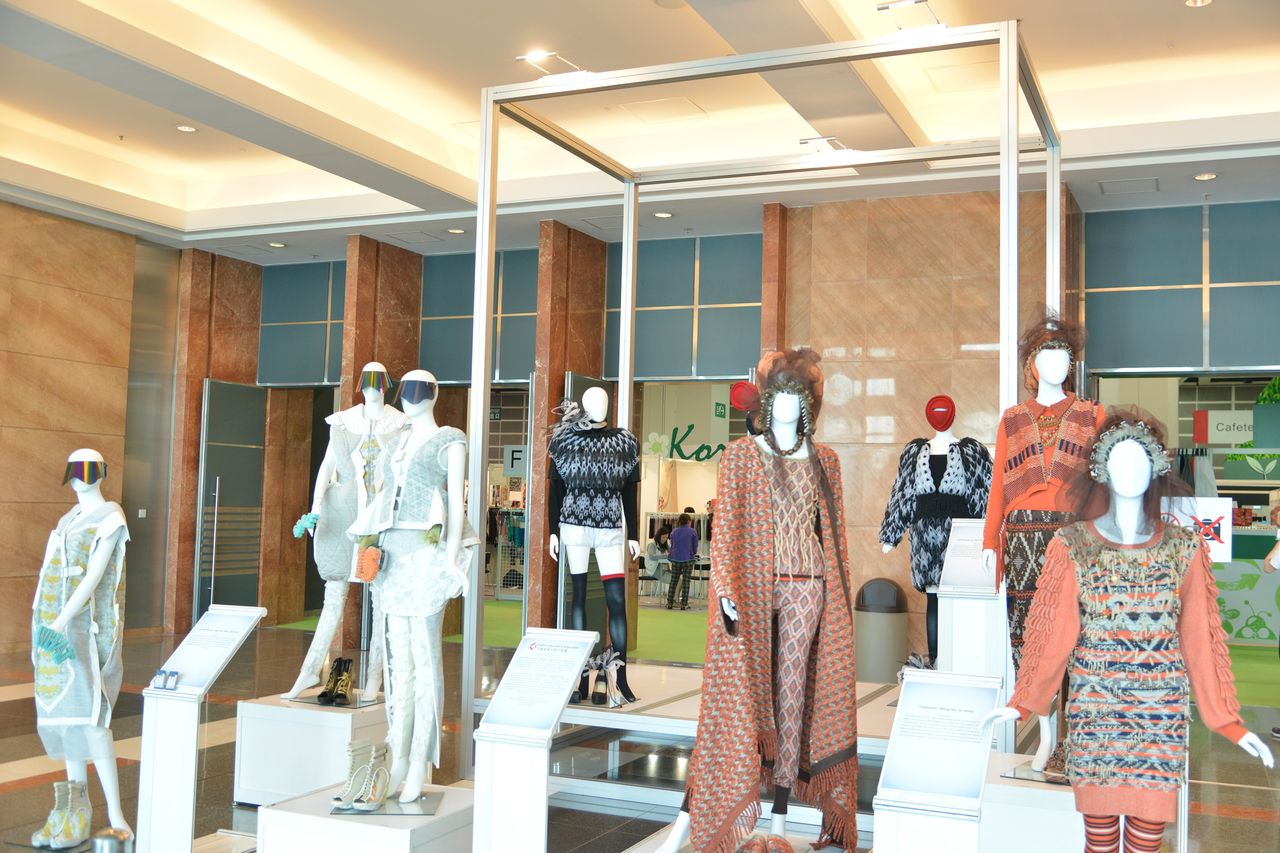 And even though most exhibitors rued the slowdown in business and low demand from western markets, they were happy with the kind of sales they were doing within the Asian region. As Jin Wei Liang, Deputy Director, Shaoxing County Bureau of Commerce explained, “Earlier, the US accounted for nearly 20 per cent of our exports, but now it has come down to one per cent. The market has shifted to Southeast Asia and our focus is on newer markets here. That is why we are at this exhibition, to attract new buyers from within the region.” The Shaoxing County Bureau of Commerce participated with 32 exhibitors this time, the largest ever representation at the fair. What’s more the Shaoxing county is one of China’s biggest textile producing state and 90 per cent of its produce is exported. They are now tapping countries in Southeast Asia, ASEAN and even Brazil to tide over the slowdown. Agreed Kevin Tsang Fin Fung of Harbin Linen Mill (HK), who says “With the Chinese currency having appreciated in the past year, margins are low and prices cannot be increased too much. To tide over difficult times, we have been looking at markets in ASEAN and Southeast Asia. That has helped us also we have developed newer fabrics to fit client’s requirements.”
And even though most exhibitors rued the slowdown in business and low demand from western markets, they were happy with the kind of sales they were doing within the Asian region. As Jin Wei Liang, Deputy Director, Shaoxing County Bureau of Commerce explained, “Earlier, the US accounted for nearly 20 per cent of our exports, but now it has come down to one per cent. The market has shifted to Southeast Asia and our focus is on newer markets here. That is why we are at this exhibition, to attract new buyers from within the region.” The Shaoxing County Bureau of Commerce participated with 32 exhibitors this time, the largest ever representation at the fair. What’s more the Shaoxing county is one of China’s biggest textile producing state and 90 per cent of its produce is exported. They are now tapping countries in Southeast Asia, ASEAN and even Brazil to tide over the slowdown. Agreed Kevin Tsang Fin Fung of Harbin Linen Mill (HK), who says “With the Chinese currency having appreciated in the past year, margins are low and prices cannot be increased too much. To tide over difficult times, we have been looking at markets in ASEAN and Southeast Asia. That has helped us also we have developed newer fabrics to fit client’s requirements.”
Korean organic cotton specialist fabric maker Kayjune Company was at present at the fair backed by Korea Trade Investment Promotion Agency. Their niche products are sold to manufacturers in Japan, Hong Kong, Russia among others and as SeongMoon.Kang, President of Kayjune Company explained, “Ours is a niche product and we have a lot of domestic customers. However, we are now tapping newer markets in Asia to grow our business.” Similarly Shingpung Textile makers of specialized nylon, spendex fabrics for outdoor wear and supplier to brands like Columbia, Puma, John Wolfskin among others has faced a slowdown since their biggest market is in Europe. But as Hong-Cheul, Shing says “Indeed, the economic slowdown has affected business but we are developing newer customers in the region and also in Europe.”
Closer home, the Apparel Export Promotion Council (AEPC) has been encouraging Indian industry toincrease apparel exports from India to non-traditional markets from the current 24 percent to 35 per cent within next few years. In fact, in the past one year Indian exporters entered newer destinations such as Latin America, southern and western Africa, Japan, Russia, Israel and Australia during. With government’s support through focus market schemes and market linked focus product schemes and various FTAs have given Indian businesses market access especially in Japan. Newer markets brought in 10 per cent business for the industry. According to AEPC data, Japanese demand seemed to help Indian garment exporters. Exports to Japan rose to 4.4 per cent last year after a 2.1 per cent drop the previous year. The industry is also strongly working on moving from cotton to synthetic fibre, as it will help diversify into new products like sportswear, swim suits. This is expected to help double exports in the next five years.
 With more and more men willing to loosen their purse strings on clothes and accessories, many menswear players are logging onto the e-commerce space to fulfil the rising demand. In fact, many web platforms like Elitify.com, Pernia Qureshi’s The Men’s Shop, GujralSons and SBJ House of Luxury are cashing in on the growth opportunity for menswear.
With more and more men willing to loosen their purse strings on clothes and accessories, many menswear players are logging onto the e-commerce space to fulfil the rising demand. In fact, many web platforms like Elitify.com, Pernia Qureshi’s The Men’s Shop, GujralSons and SBJ House of Luxury are cashing in on the growth opportunity for menswear.
A research done by Elitify.com reveals, men’s market is growing rapidly at a 13 per cent annually compared to 10 per cent for women. The fastest growing segment of online commerce is fashion, and it’s being propelled by men and they prefer shopping online as it is convenient and efficient.
Another report by ASSOCHAM showed the online retail industry in India is likely to be worth Rs 7,000 crores by 2015 and the credit goes to easy internet access and availability of broadband services. The survey conducted by ASSOCHAM Social Development Foundation (ASDF) is based on interactions with 500 shoppers in the age group 16 to 35 years in 10 cities -- Delhi, Mumbai, Chennai, Bangalore, Kolkata, Ahmedabad, Chandigarh, Ludhiana, Lucknow and Jaipur. 
No wonder from e-retailers to designers everyone is logging on the net to sell their products. Take Pernia Qureshi for example, the pop up shop recently launched ‘The Men’s Shop’ which stocks menswear designer clothes from the likes of Rajesh Pratap Singh, Karan Johar + Varun Bahl, Atsu Sekhose, Rohit Gandhi & Rahul Khanna and Raghuvendera Rathore. On offer are formal suits, pants and shirts as well as laidback denims, kurtas and shorts and accessories.
If designers are cashing in on the online trend, so are conventional menswear brands. GujralSons, a 40-year-old brand catering to men's ethnic wear, has also come up with exclusive wedding collection that is being retailed through their website as well as at their stores. It has a range of sherwanis, suits, kurta pajamas among others. Most top fashion brands too have taken the e-route to increase their sales. Online shops are also evolving by focusing on concepts such as Dial-a-Suit as introduced by SBJ House of Luxury -- a men’s apparel brand.
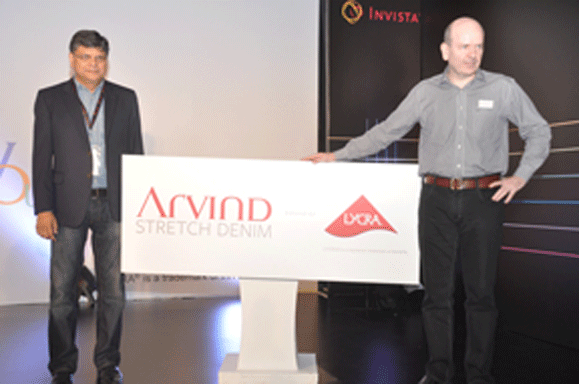 Invista, the leading fiber and fabric innovator in textile industry organised the second edition of its knowledge and innovation conclave ‘Lycra Rendezvous’ at the Taj Palace, New Delhi recently. The event witnessed leading mills and brands from the textile and apparel industry such as Arvind Denim, Mafatlal Denim, Vardhaman, Banswara Syntex among others participate in the event.
Invista, the leading fiber and fabric innovator in textile industry organised the second edition of its knowledge and innovation conclave ‘Lycra Rendezvous’ at the Taj Palace, New Delhi recently. The event witnessed leading mills and brands from the textile and apparel industry such as Arvind Denim, Mafatlal Denim, Vardhaman, Banswara Syntex among others participate in the event.
The day-long event saw insightful discussions and product showcase by Invista’s key customers. The highlight was the launch of its latest innovation LycraT166L fiber and the unveiling of Arvind Stretch Denim powered by Lycra fiber. Discussions amongst the top denim experts and a scintillating denim fashion show were the other high points. It started with a presentation on the evolution of denim jeans as a result of the butterfly effect ‘change happening at one place leads to spread of change everywhere.’ Denim jeans were showcased in new colour palettes, pastel and metallic and leather looks.
Arvind Denim launched its latest range of stretch fabrics under two key themes – Denim Glam and Pop Vintage bringing Invista’s best textile innovations together with the denim fabric making expertise of Arvind. As Aamir Akhtar, CEO, Arvind Denim explained, “The Lycra fiber brand has delivered multiple breakthroughs over the years through continuous investment in innovations and conquered new frontiers in comfort, fit, functionality and consumer concepts. Invista as the pioneer of innovation has contributed to the growth of the Indian textile and apparel industry that is currently growing at a healthy 14-15per cent. Taking forward our association, we are delighted to present the new generation of stretch fabrics with Lycra fiber that take comfort, style and stretch technology to another level.”
Invista shared the fiber innovation story with the audience. Main developments  included the Tough Max Lycra fabrics made with Lycra T400 fiber, which imparts strength and comfort. They also showcased their global denim concept collection for Spring/Summer 2014. The collection encompasses innovative garments highlighting company’s key technologies for denim including Tough Max, Lycra fabric, Xfit Lycra fabrics, Lycra dualFX fabrics and Coolmax fiber under key three themes of Fantasy, Reality and Harmony. Featured styles under Fantasy comprise of pearlized coatings, reflective surfaces, coloured weft yarns, prints and tie-dye effects; Reality features simple evergreen denim structures and neon colours; Harmony collection represents performance denims with knit inspired jacquard weaves of cotton and Lycra fiber.
included the Tough Max Lycra fabrics made with Lycra T400 fiber, which imparts strength and comfort. They also showcased their global denim concept collection for Spring/Summer 2014. The collection encompasses innovative garments highlighting company’s key technologies for denim including Tough Max, Lycra fabric, Xfit Lycra fabrics, Lycra dualFX fabrics and Coolmax fiber under key three themes of Fantasy, Reality and Harmony. Featured styles under Fantasy comprise of pearlized coatings, reflective surfaces, coloured weft yarns, prints and tie-dye effects; Reality features simple evergreen denim structures and neon colours; Harmony collection represents performance denims with knit inspired jacquard weaves of cotton and Lycra fiber.
Talking about the innovations, Andrew Evans, MD-South Asia, Invista said, “At Lycra Rendezvous, our endeavour was to provide a platform to the denim industry to delve deep into the consumer psyche, identify consumer needs and come up with innovative ways to spark the industry’s growth. We received a fantastic response from our customers and representatives of the industry reiterating the success of the event that brought together the entire value chain together.”
Commenting about their association with Invista Ravi Toshniwal, MD, Banswara Syntex said, “We have been working closely with Invista for the last 14 years on technical collaborations and new product developments for yarns and fabrics with Lycra fiber and Lycra T400 fiber. We highly value the partnership since it has enabled us to differentiate our offerings and deliver many firsts in the Indian textile market.”
Invista also presented novel consumer insights and research findings in a special session aimed at enabling the brands to identify ways of ‘winning the today’s denim consumer’. The highlight of the event was the brainstorm wherein industry stalwarts delved on topics such as ‘Shifting Supply Base: Opportunities & Challenges’ and ‘What does the Indian market need’.
The forum brought to the forefront challenges and opportunities that the textile and apparel industry is facing currently. The trends and future of the garment industry in countries like Sri Lanka, Cambodia and Vietnam were also discussed at length. It highlighted the ardent need for technological advancement and finesse in fiber processing.
Proline, the first Indian T-shirt brand
launched in 1983 by the Batra Group,
enjoys a 10 per cent market share of
the sports lifestyle segment today.
With a modest start as a sportswear
brand, Proline has come a long way
to become a major performance and
lifestyle label in the country. The brand
is the brainchild of brothers, Rajesh and
'Rajiv Batra, both avid tennis players and
sports enthusiasts. The duo identified a gap
in the Indian market for good quality sportswear
and introduced Proline. Sandeep Mukim, CEO, Proline India,
talks to Gurbir Singh Gulati about the brand's evolution and its
product portfolio.
hjhjhjhjhjhjhh
For over two decades story has carved a niche in the mens' wear segment. The launch of
Growing awareness about designer wear and people's spending capacity along with a


